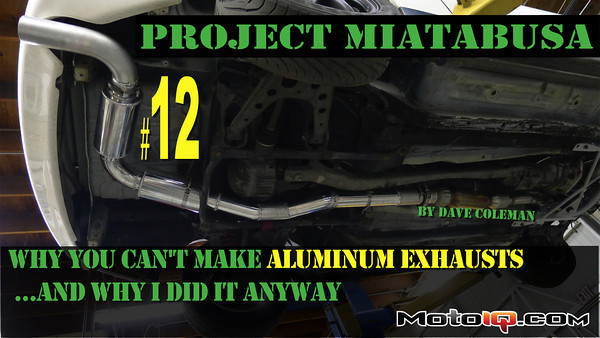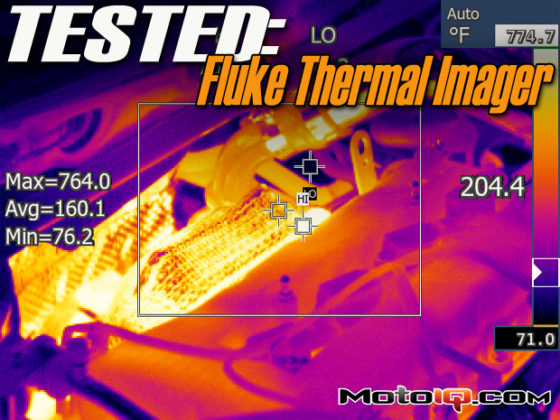,

Speaking of things I really don't understand how you weld, look at the perfection inside this collector. It's a shame we have to hide this inside a tube…

The header included this extraction megaphone to step up from the 2-inch collector to the 2.5-inch downpipe. It wasn't welded on, just in case we decided we needed a bend before the extractor, but that turned out to be unnecessary.

One concern about this header layout, of course, is heat, especially where the header passes within two inches of the plastic cooling fan. It's not clear just how much of a problem this will be, but I figure the fan should stay cool enough while there is air passing over it. The real danger comes when the car is idling, especially if it's idling down after a hard run when the header is really hot. My (probably) temporary solution is to simply re-wire the A/C fan relay to be triggered by the neutral switch in the transmission. With few exceptions, if the car is in gear, it will be moving and air will be flowing. If the car is in neutral, the fan will generate its own cooling air flow.

We fabbed the downpipe with a few bits from Burns Stainless. Burns' prices are high, but you're paying for quality. The tight-radius bend we used came from their discount page, where they sell bends they rejected for poor quality. They warn you these parts might have wrinkles or imperfections, but I couldn't find any reason this part was in their reject pile. The tube is 18-gauge 304-stainless. We built the downpipe first in one piece, as shown here, then cut it and installed a V-band for easy service later.

The front half of the exhaust is all rigidly mounted to the engine. Because stainless has a pretty high rate of thermal expansion, and we can expect the header and downpipe to grow a bit under load, we hose clamped this brace in place rather than welding it. This way, if the thermal expansion forces get too big, the tube can shift slightly in the bracket rather than trying to rip the weld out.

We used this Burns Stainless V-band assembly on the front of the downpipe, and a Vibrant Performance V-band on the back. This was a logistical decision having everything to do with when the two ends were fabricated, but as a result, we learned a few things about the differences between these two V-bands. Both cost about the same amount, and both use exactly the same clamp. The difference is in the coupler doodads shown here. The Burns V-band pictured here uses lightweight, rolled ends that slide over the tube and have no built-in provisions for alignment. To get consistent assembly, you need to install them slightly offset from the joint in the pipe, like this. When assembling the tube, the offset section aligns the tube and the V-band clamp holds them together. This design is ideal if, like us, you pre-fabricated the system and you want to simply cut it and install a coupling without removing a section of pipe. It's also ideal if you're a weight weenie (also like us) and every gram counts.
The Vibrant V-band assembly uses heavier billet ends that space the two sections of pipe apart by about an inch. If you're fabricating a system from one end to the other, pipe, V-band,V-band, pipe, the billet design is probably easier. Skip to page 6 to see the difference.




1 comment
Hey,
Do you have any updates on the reliability of this? Thanks!